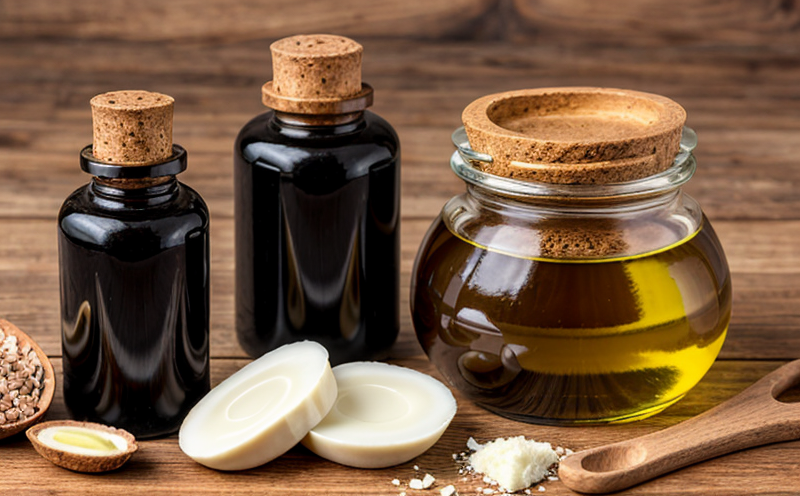ISO 9936 Tocopherol (Vitamin E) Analysis in Oils
The analysis of tocopherol (vitamin E) in oils is critical for ensuring product quality, safety, and compliance with international standards. ISO 9936 provides a robust framework for the quantitative determination of tocopherols in vegetable oil samples. This method is particularly important in sectors such as food and feed testing where the presence of vitamin E can influence the nutritional value and stability of fats and oils.
The standard specifies precise techniques for extracting, purifying, and quantitatively analyzing tocopherol compounds using various analytical methods like high-performance liquid chromatography (HPLC) or gas chromatography (GC). The test measures both alpha-tocopherol and other forms of tocopherols present in the sample. This analysis is crucial because vitamin E acts as a natural antioxidant, protecting oils from oxidative degradation which can lead to rancidity.
The procedure outlined by ISO 9936 involves several key steps including:
- Sample preparation: Ensuring homogeneity and stability of the oil sample.
- Extraction: Utilizing solvents like hexane or chloroform to extract tocopherols from the oil matrix.
- Purification: Removing impurities and other compounds that might interfere with the analysis.
- Detection: Using chromatographic techniques to separate and quantify the different tocopherol components.
The precision of this method is paramount, especially in industries where vitamin E content can affect product shelf life. Misreporting or incorrect levels could have significant implications for food safety and regulatory compliance. For instance, overestimating tocopherol content might mislead consumers about the actual nutritional value of a product.
ISO 9936 ensures accurate quantification by setting clear acceptance criteria based on method detection limits (MDL) and repeatability. The standard also provides guidance on sample handling to minimize contamination and ensure reliable results. Compliance with this test is essential for manufacturers aiming to meet international standards such as those set forth by the Codex Alimentarius Commission.
In practice, this service is often requested by quality managers looking to verify the integrity of their production processes or by R&D engineers seeking to optimize formulations. Procurement teams also benefit from this testing as it helps them source high-quality raw materials ensuring consistent product quality across batches.
Benefits
- Precise quantification of tocopherols ensures product integrity and quality.
- Avoids misrepresentation of nutritional value, enhancing consumer trust.
- Supports regulatory compliance with international standards like ISO 9936.
- Minimizes waste by ensuring stable products that meet shelf-life expectations.
- Facilitates optimization of production processes and raw material sourcing for quality assurance.
Why Choose This Test
Selecting ISO 9936 analysis is advantageous due to its stringent methodology which guarantees accurate measurements. The test aligns with global standards, ensuring consistency across different markets. For manufacturers, this service offers a competitive edge by providing reliable data that can be used for quality control and product development.
Compliance with international standards like ISO 9936 is not only important for meeting regulatory requirements but also for maintaining brand reputation and customer satisfaction. By choosing this test, companies demonstrate their commitment to high-quality products and sustainable practices. This service also supports continuous improvement in production processes by providing insights into product stability and nutritional content.
The results from this analysis are particularly valuable for food and feed industries where the quality of oils directly impacts consumer health and safety. Reliable data on tocopherol levels ensures that products meet or exceed expectations, thereby fostering customer confidence and loyalty.
Environmental and Sustainability Contributions
The analysis of tocopherol in oils contributes positively to environmental sustainability by promoting the use of high-quality raw materials that do not degrade prematurely. This minimizes waste generation and supports more efficient resource utilization within production processes. By ensuring consistent vitamin E levels, manufacturers can extend the shelf life of their products, reducing the need for additional processing or disposal.
Moreover, accurate tocopherol analysis helps in formulating oils that are less prone to oxidative stress, leading to a lower environmental footprint during storage and transportation. This service supports broader sustainability goals by encouraging responsible use of resources and minimizing waste generation throughout the supply chain.
The precise quantification provided by ISO 9936 ensures that manufacturers can optimize their production processes, thereby reducing energy consumption and operational costs. By maintaining consistent vitamin E levels, companies contribute to a more sustainable food industry ecosystem where quality is paramount for both producers and consumers.





